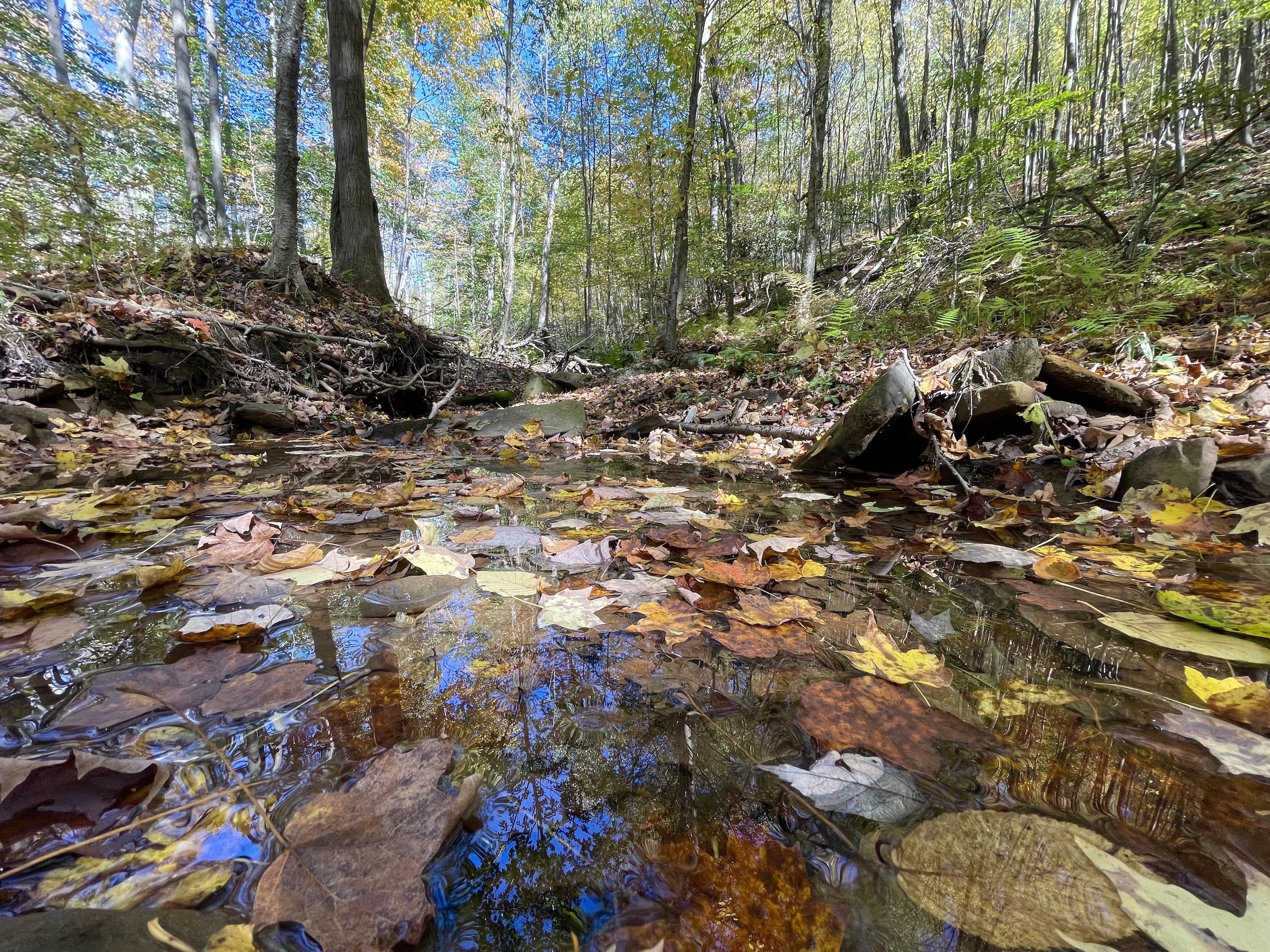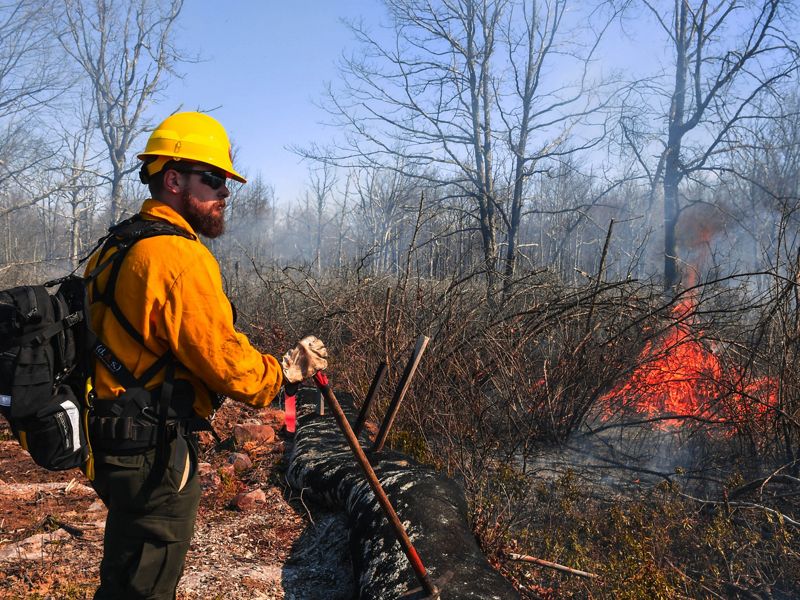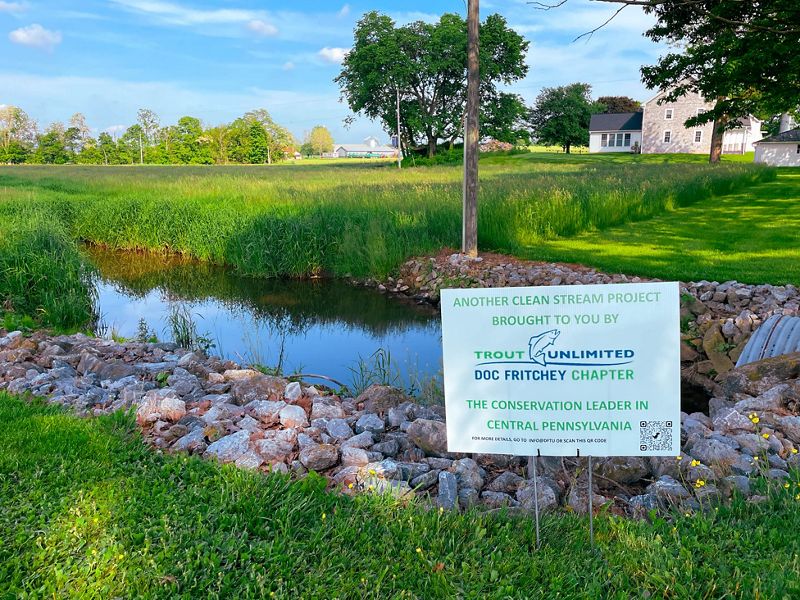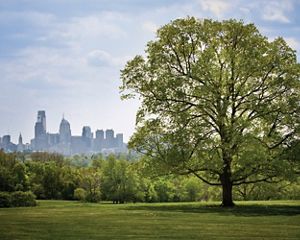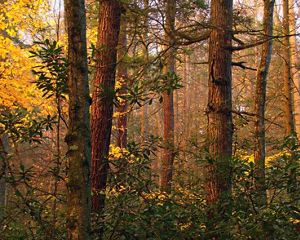A Year of Conservation Results
2025 was an important year for conservation. Explore some of our conservation wins and projects in Pennsylvania.

Dear Friends, Partners and Supporters,
This year marks a remarkable milestone: the 50th anniversary of The Nature Conservancy’s Pennsylvania Chapter. As we celebrate five decades of conservation impact, we honor the visionaries, staff, trustees and supporters who laid the foundation for our work. Their dedication and passion for protecting nature have made it possible for us to continue building a future where both people and nature thrive.
Stay in Touch
Sign up to receive monthly email conservation news & updates from Pennsylvania.
Today, we stand at a pivotal moment—not only in our chapter’s history but in our global mission. It has been five years since The Nature Conservancy launched its bold and ambitious 2030 goals, and just five years remain to address the most complex challenge of our lives: the interconnected crises of climate change and nature loss. These goals are driving transformative change across the organization, and here in Pennsylvania, we’re contributing in meaningful ways to TNC’s three critical priorities: protecting ocean, land and freshwater; providing food and water sustainably; and tackling climate change.
Over the past year, our chapter underwent a strategic planning initiative to sharpen our focus and strengthen our impact. Guided by our new Strategic Plan 2025-2030—One Future: Together, We Find A Way—we are investing in cutting-edge science, expanding our partnerships and deepening our commitment to work that supports local communities. We are proud to be part of a team that is leading with bold strategies and delivering measurable results.
In the pages that follow, you’ll find stories of innovation, collaboration and resilience. From restoring vital habitats to advancing climate solutions, our accomplishments this year reflect the power of collective action and the enduring importance of conservation in Pennsylvania.
Thank you for being part of this journey. We look forward to continuing our work together in honoring the past, rising to meet the challenges of today and shaping a thriving future for generations to come.
With gratitude,
-

—Lori Brennan
Executive Director, TNC Pennsylvania/Delaware
-

—Carol Collier
Board Chair, TNC Pennsylvania/Delaware
Supporter Spotlight
A Tale of Two Trustees
Explore the unique journeys of two TNC trustees, Rich Aneser and Beth Hucker, whose paths reflect the passion and diversity behind conservation leadership.

Protect

Pennsylvania holds unparalleled opportunities for conservation. From efforts to protect watersheds and forests in the Appalachians to projects that restore the wetlands and floodplains that filter our water and reduce flooding, our work is rooted in the belief that healthy ecosystems are essential for all life to thrive.
Connecting Landscapes, Protecting the Future: Expanding Conservation Across the Appalachians
In 2025, The Nature Conservancy in Pennsylvania achieved landmark conservation victories, leading and assisting partners with land acquisitions and conservation easements that protect an additional 3,232 acres of resilient Appalachian lands—critical additions to this vital landscape that will benefit people, wildlife and the planet for generations to come.
Together, these acquisitions mark a powerful step forward in advancing TNC’s 2030 goals by preserving biodiversity, strengthening climate resilience and expanding public access to nature. These conservation successes were made possible through the steadfast support of the Open Space Institute, The Hamer Foundation, Pennsylvania Game Commission, Pennsylvania Department of Conservation and Natural Resources, and dedicated TNC supporters like you, whose passion for protecting Pennsylvania’s most critical landscapes is helping shape a healthier, more connected future for all.
-
The Appalachian landscape has long been a stronghold for biodiversity—a place where black bears roam, warblers nest and ancient trees stretch toward the sky. But even this steadfast refuge is feeling the pressure of a changing world. Rising temperatures, shifting rainfall patterns, invasive species, development pressure and decades of fire suppression are altering the very fabric of these forests.
That’s why The Nature Conservancy’s team in Pennsylvania is taking bold, science-driven steps to help these ecosystems adapt and thrive.
In the northeastern part of Pennsylvania’s Appalachian Forests, TNC staff focused on improving the resilience of aging hemlock and red spruce forests—two iconic conifer species increasingly threatened by invasive pests and climate change—as part of a 9,632-acre landscape-level collaboration with Bethlehem Authority.
-
In the heart of Pennsylvania’s Appalachian region, a quiet revolution is taking place—one fueled by fire, guided by science and powered by people. In fiscal year 2025, The Nature Conservancy’s Pennsylvania Fire Program achieved a historic milestone: 34 prescribed burns across 2,623 acres, the most ever recorded in a single year for the program, for both the number of burns and total acreage burned.
This year’s record-setting effort directly supports Pennsylvania’s 2030 Goals and TNC’s broader Appalachians Program, which aims to restore the natural role of fire across the region. But the work is also deeply collaborative. TNC partnered with five different state and federal agencies to improve public lands through prescribed fire, including TNC’s first-ever burn on Allegheny National Forest. Many of these collaborations are funded with generous support from the Richard King Mellon Foundation.
-
The 2025 Agriculture Conservation Assistance Program (ACAP) Partnership Award recognized the Hammer Creek Wetland, Floodplain and Stream Restoration Partnership for its outstanding collaborative work to restore freshwater ecosystems in south-central Pennsylvania. At the heart of this award-winning effort was TNC’s freshwater team, whose leadership and technical expertise helped drive the project’s success.
Working alongside partners including the Lebanon County and Lancaster County Conservation Districts, Doc Fritchey Chapter of Trout Unlimited, Pennsylvania Department of Environmental Protection, Cocalico Creek Watershed Association, Environmental Planning & Restoration and Lancaster Farmland Trust, TNC is playing a pivotal role in designing and implementing restoration strategies that improve water quality, reduce flooding and enhance habitat across the Hammer and Cocalico Creek Watersheds and the Chesapeake Bay Basin.
The project exemplifies TNC’s commitment to science-based, collaborative conservation. By restoring wetlands, reconnecting floodplains and improving stream function in a heavily agricultural landscape, the partnership is creating long-term benefits for both nature and local communities.
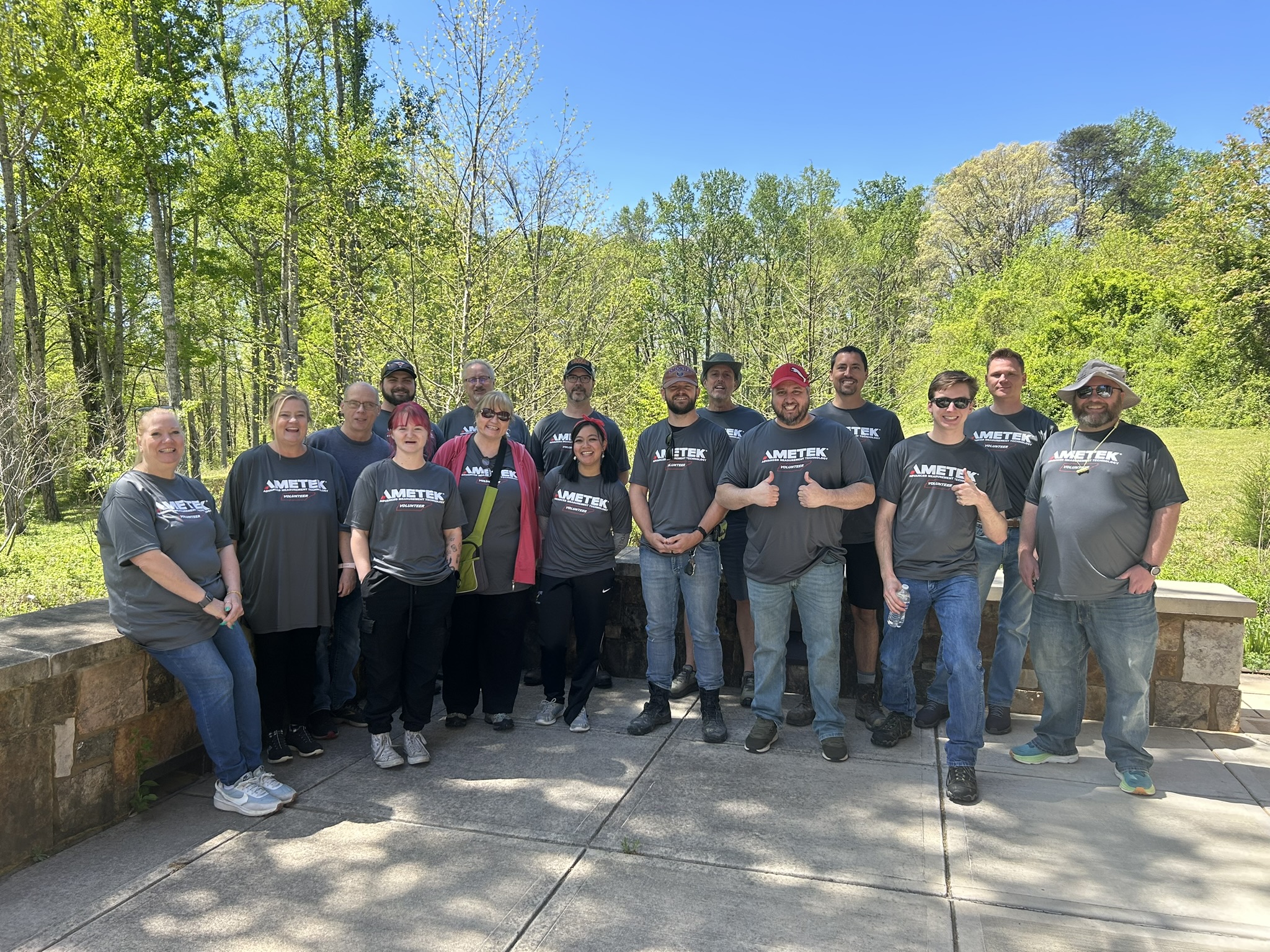
DONOR SPOTLIGHT
AMETEK
The AMETEK Foundation is proud to support The Nature Conservancy at the corporate level, aligning with its mission to address the urgent and interconnected challenges of climate change and biodiversity loss—a mission that impacts all AMETEK colleagues and our communities.
Approaching its third year of partnership, the AMETEK Foundation initially contributed to TNC’s global freshwater initiatives, helping to protect vital rivers, lakes and wetlands for the benefit of both people and nature. In 2025, the Foundation deepened its commitment by supporting TNC’s 2030 goals, which focus on three core pillars: protecting ocean, land and freshwater; providing food and water sustainably; and tackling climate change.
AMETEK is an innovative global manufacturing corporation committed to solving complex challenges through advanced technology solutions that make the world a better place. When selecting an environmental organization to partner with, AMETEK sought one with a global footprint—one that could positively impact its colleagues around the world. Equally important was finding a nonprofit that shared its passion for innovation in addressing the urgent environmental issues facing our planet. TNC stood out as a natural fit. Through innovative conservation strategies and transformative practices, TNC is driving measurable progress to safeguard the planet’s natural resources. AMETEK’s shared purpose is to make a safer, sustainable and more productive world a reality. Supporting TNC’s mission helps us all get there.
Provide

Food and Water Sustainably
In Pennsylvania, providing food and water sustainably is especially vital since approximately half of the freshwater flowing into the Chesapeake Bay comes from the Susquehanna River, which also accounts for the largest source of agricultural runoff. From the fertile fields of Lancaster County to the headwaters of the Susquehanna Basin, we’re advancing practices that reduce agricultural runoff, improve soil health and keep our agricultural waterways clean—for people, wildlife and future generations.

The Chesapeake Bay: TNC's Newest Global Foodscape
This past year, we were excited to announce that the Chesapeake Bay has been named a priority landscape in TNC’s Regenerative Foodscapes strategy. This global initiative connects food-producing regions around the world through shared regenerative practices—opening doors to international expertise, new markets, resilient supply chains and policy support. It’s a powerful opportunity to accelerate our efforts to protect biodiversity from the headwaters of the bay to the ocean.
Healthy Soils, Thriving Yields, Cleaner Water
In the rolling farmland of Lebanon and Lancaster Counties, TNC is leading a transformative effort to restore the health of streams, wetlands and working lands. Through the creation of two regional partnerships, TNC is bringing together landowners, conservationists and local agencies to tackle one of the region’s most pressing environmental challenges: the degradation of freshwater habitats.
These partnerships are already making waves. Nearly 300 landowners have been engaged in conversations about conservation, with 65 ready to explore restoration opportunities on their properties. Together, they’ve helped shape a growing portfolio of 20 high-impact projects—ambitious efforts that aim to restore several miles of stream corridors and 150 acres of wetlands.
At the heart of this work is a simple but powerful idea: healthy waterways mean healthier farms, communities and ecosystems. By reconnecting streams to their floodplains and restoring wetlands, these projects reduce flooding, improve water quality and create vital habitat for fish and wildlife—all while supporting the long-term sustainability of Pennsylvania’s agricultural landscapes.
Tackle
Climate Change
Pennsylvania is a place of deep ecological richness and human connection—home to ancient forests, working farmlands and vibrant cities. It’s also a top contributor to the emissions that cause climate change. The Nature Conservancy works with local, state and federal legislators to advance solutions that balance our need for clean, reliable energy with meaningful conservation outcomes.
Policy Powers Progress: Defending Nature and Climate Solutions
At TNC, we know that smart policy is essential to achieving our 2030 conservation and climate goals. Since our 2030 goals were launched, TNC has worked to help secure critical federal climate and energy investments that promised to drive Pennsylvania into a future of clean energy leadership. But these gains are under threat.
Across the country, including here in Pennsylvania, critical federal programs and funding are being rolled back, costing Pennsylvania jobs and raising energy prices for families. That’s why TNC is stepping up to defend these federal policies, programs and investments and fighting for climate-smart policies in Harrisburg, too. In 2024, we helped deliver a precedent-setting victory for climate and energy that included some of the most robust conservation protections ever seen in a new Pennsylvania energy bill.
Meeting the Moment
We’ve launched a new campaign, Meeting the Moment: Investing in Nature and Climate Solutions, focusing on three key strategies:
-
1. Promoting climate solutions and clean energy
-
2. Defending public resources
-
3. Providing food and water sustainably
These strategies are timed to align with major federal decisions happening now, such as the federal budget, keeping our public lands in public hands and passing a new Farm Bill. We’re also involved in defending state-level conservation funding, funding for our natural resource agencies, and the Lightning Plan for clean energy abundance. By engaging in key policy moments like this, we reinforce our commitment to advancing sound policies that reduce emissions, invest in clean energy and strengthen environmental protections statewide. TNC’s approach remains nonpartisan, science-based and community-driven. We’re leveraging our trusted relationships, deep expertise and decades of experience to influence policy where it matters most—often behind the scenes, and always with purpose.
Helping Cities Adapt to a Changing Climate
TNC is accelerating the adoption of green stormwater infrastructure (GSI) to build climate resilience and healthier urban environments. At the heart of this effort is the GSI Impact Hub (gsiimpacthub.org), a groundbreaking digital suite of resources co-created by our urban conservation team and partners, including the Green Infrastructure Leadership Exchange, One Water Econ, and water utility leaders and government agencies from more than a dozen regions nationwide.
The Hub helps cities design, implement and scale innovative GSI solutions. Its transformative potential was recently recognized with an Innovation Award by the Sustainable Business Network of Greater Philadelphia.
Locally, we are bringing green infrastructure to life through meaningful projects, such as the greening of four elementary schoolyards, set to break ground in 2026. With rain gardens, permeable surfaces and native plantings, these schoolyards will manage stormwater where it falls, improve water quality and create more inviting spaces for students and their communities—all while serving as living laboratories for young learners.
Discover the GSI Impact Hub
Dive deeper and explore a suite of resources and tools to help quantify and communicate the multiple benefits of GSI.
Explore the GSI Impact Hub
Download
Support Pennsylvania Nature
Make a Lasting Impact
You have the power to make a difference for Pennsylvania and for our planet. Your support will help fund groundbreaking science and conservation that help us protect nearly 100,000 acres of land across Pennsylvania.




